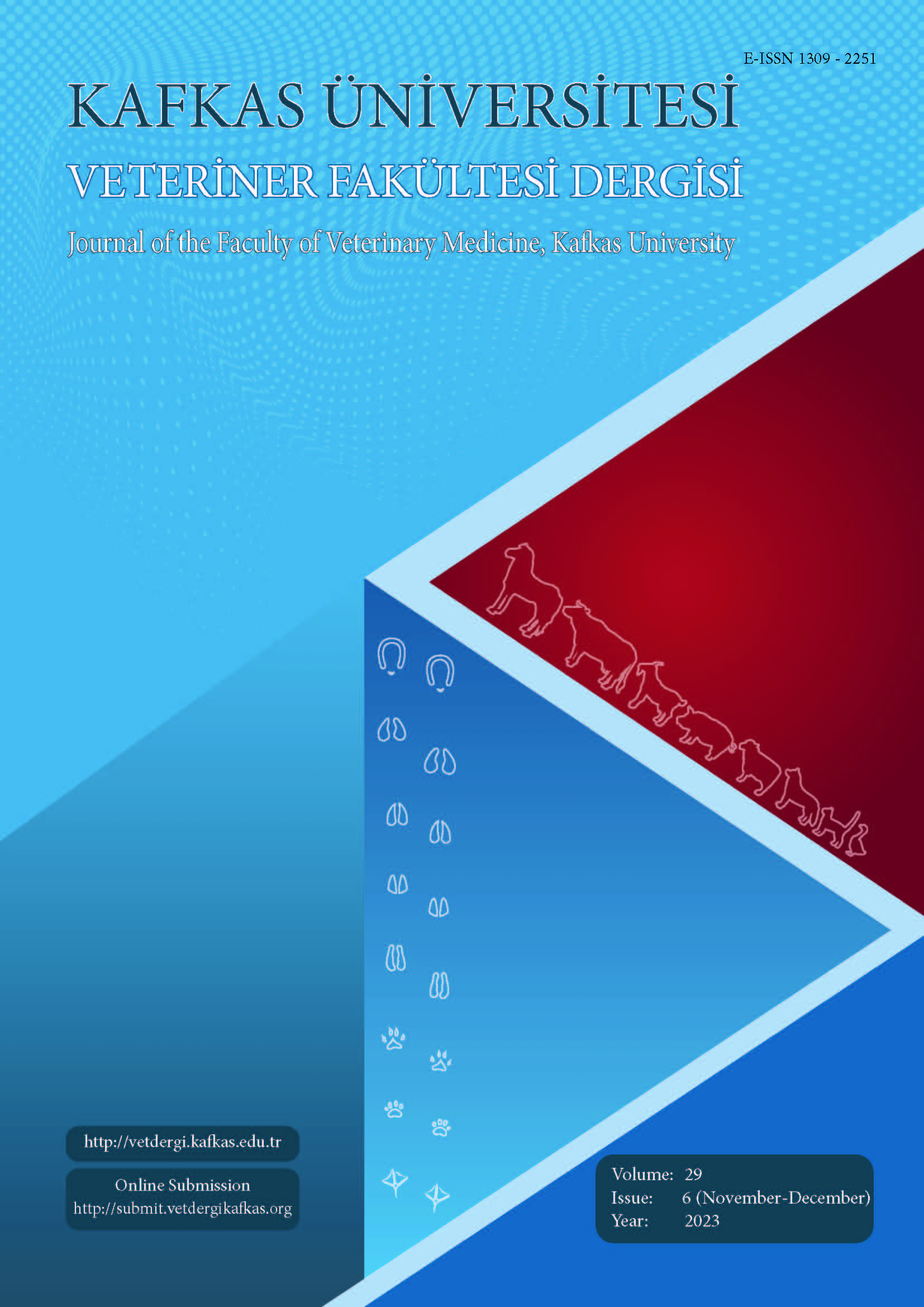
This journal is licensed under a Creative Commons Attribution-NonCommercial 4.0 International License
Kafkas Üniversitesi Veteriner Fakültesi Dergisi
2023 , Vol 29 , Issue 6
Development of Multiple Real-time Fluorescent PCR for Detection of Porcine parvovirus (PPV), Porcine circovirus Type 2 (PCV2) and Haemophilus parasuis (HPS)
1College of Animal Science and Veterinary Medicine, Henan Institute of Science and Technology, Xinxiang 453003, CHINA2Wuxi Application Technology Company Limited, Nantong 226200, CHINA DOI : 10.9775/kvfd.2023.27837 Porcine Parvovirus (PPV) and porcine circovirus type 2 (PCV2) often have mixed infection in the process of clinical breeding, and PCV2 infection will cause immunosuppression in pigs, which is easy to stimulate or complicated with other infectious pathogens. Haemophilus parasuis (HPS) is a typical "opportunistic" pathogen, which often leads to mixed infection with PCV2 as a secondary pathogen. In order to establish a rapid and simultaneous detection of three pathogens of PPV, PCV2 and HPS, referring to the relevant genome sequence of GenBank, specific primers were designed according to the conserved region of VP2 gene of PPV, Cap gene of PCV2 and infB gene of HPS, and the amplified fragments were cloned into the vector to construct plasmid standard. Using standard samples with different dilutions as templates, adjusting primer concentration, annealing temperature and other conditions, a real-time fluorescence quantitative PCR method for PPV, PCV2 and HPS triple SYBR Green I was established. Three specific Tm peaks could be generated on the same melting curve without cross-reaction with other pathogens. The minimum detection limits of this method were 153 copies/μL, 128 copies/μL and 91 copies/μL, with good specificity and repeatability, which provided technical support for rapid diagnosis of these three diseases and could be used for clinical tissue material detection. Keywords : Differential diagnosis, Haemophilus parasuis, Multiple RT-PCR, Porcine circovirus type 2, Porcine parvovirus










